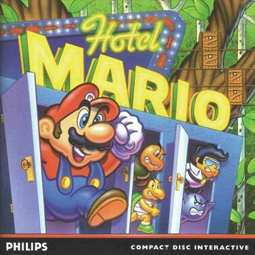By: Chris Hodges, editor-in-chief
There is a lot of buzz today about the release of Nintendo’s first dedicated mobile app, Miitomo. With the way people are talking about it, you’d think that Miitomo is the first Nintendo game that has ever been released on platform that wasn’t Nintendo’s own. Of course, that is far from being the case; there have been many Nintendo games released on a number of non-Nintendo platforms, including some of the company’s most beloved and iconic franchises.

What people sometimes forget is that Nintendo actually spent some time as a third-party game company before joining the ranks of the platform holders; in fact, eight whole years elapsed between the release of their first arcade video game (EVR Race) and the launch of their first console (the Famicom). While the only especially noteworthy game they put out during that time was Donkey Kong, the debut of DK, Mario, and the soon-to-be-forgotten Pauline still predated the Famicom by two years. Donkey Kong was a massive hit, so of course Nintendo wanted to get the game onto home platforms while the iron was still hot. And without a platform of their own, Donkey Kong was instead brought to the Atari 2600, Intellivision, Colecovision, and Atari’s home computers. However, even after the release of Nintendo’s first console, licensing deals for Donkey Kong were already in place that led to the game being further ported to 10+ more non-Nintendo platforms before the big ape finally settled into his long life as a Nintendo platform-exclusive entity.

Perhaps more surprisingly was the original (non-Super) Mario Bros. That game hit arcades in 1983, the same year that the Famicom launched in Japan. So, unlike with Donkey Kong, Nintendo was definitely aware of the fact that it was soon going to become a platform holder while it was developing Mario Bros. Nevertheless, the Famicom and its Western counterpart, the NES, were not the exclusive homes to Mario’s first headlining adventure. It was brought to all of the major Atari platforms as well as the Apple II, Amstrad CPC, and ZX Spectrum. There was even a Commodore 64 port, which is noteworthy because of how late it hit–1986–which by then both the Famicom and NES had been well-established successes, and Nintendo certainly didn’t need the extra outside-licensing cash by then. But Nintendo must have still not fully seen the value in keeping their games to themselves in the mid-80s as they also hired Hudson to port versions of Excitebike, Ice Climber, Balloon Fight, and others to the PC-8800 and Sharp X1 series of computers, as well as a unique version of the company’s marquee game, Super Mario Bros.

Even as Nintendo began to pull back a bit from sharing their games with other platforms as the 80s drew to a close, they still allowed for the use of their properties for a series of educational games for PC (though several were also ported to Nintendo consoles). The first was 1992’s Mario Is Missing!, a geographical learning game that actually marked the first time Luigi starred in a game without his brother–beating Luigi’s Mansion to that punch by eight years. That was followed up by Mario’s Time Machine the following year, which came to PC alongside its NES and SNES counterparts. While Missing was very well-received, Time Machine fared far worse critically. Next, there was Mario Teaches Typing and its sequel, which are the funnest typing programs of all time that don’t feature zombies. Those two were never ported to any of Nintendo’s consoles, nor was the final of the Mario edutainment titles, 1996’s Mario’s Game Gallery (later released under the title Mario’s FUNdemntals). Those three games are among a very small number of “Nintendo games” that were never released in any form on a Nintendo platform. Unfortunately, the rest of that select club is part of one of the worst decisions Nintendo ever made.

While developing the follow-up to the Famcom/NES, Nintendo was looking to partner with an electronics company to help them develop a CD-ROM add-on for their Super NES system. We all know the story, but to sum up, Nintendo started out working with Sony but instead ended up partnering with Philips–going from one compact disc pioneer to the other. Obviously, the Super NES CD add-on never happened, but the whole odyssey forked off into two very famous directions. One was Sony continuing to develop a CD-based platform on their own and eventually releasing it as the hugely successful PlayStation. The other was Nintendo granting Philips permission to make games with Nintendo characters for Philips’ own CD-i console which they launched in 1991. The results were not only some of the worst games of all time featuring Nintendo properties, but some of the most maligned video games in history, period. The infamous lineup included Hotel Mario, Zelda: The Wand of Gamelon, Link: Faces of Evil, and Zelda’s Adventure. Another Mario game was also prototyped but never released.
It probably isn’t a huge leap to assume that the embarrassment of the CD-i Nintendo games is a big part of why the company soon after stopped letting their games appear on other platforms (although the aforementioned PC educational games continued for a couple more years). And so it went for the next nearly 20 years: if you wanted to play a Nintendo game, you had to play it on a Nintendo system. It’s been that way for so long that it’s easy to forget that Nintendo had actually spent the previous 13 years sharing their games, even after they were making their own platforms. So while Nintendo putting their games on the mobile market might be a departure from their recent strategy, it certainly isn’t a completely new thing for them to be trying.
_____

Nice post! I hadn’t realised there were so many (especially in the early Nintendo days).
LikeLiked by 1 person
Mario has gotten around way more than people realize.
LikeLiked by 1 person